Spring is an exciting time for any gardener, and as a native plant enthusiast I’m always quick to take a walk around my yard and check to see what’s emerged, what’s growing, and what is gearing up to bloom soon.
The amount of early spring growth can depend greatly on the age of the plant. In my garden I have a lot of wild red columbine (aquilegia canadensis), which was exciting because I started originally with exactly one $5 plug plant and over the course of three growing seasons diligently waited for self-seeding and carefully transplanted the young sprouts to new locations.
Now I observe some significant spring growth differences in the older, mature plant that’s now a few years old and the young sprouts that are in their second season of growth.
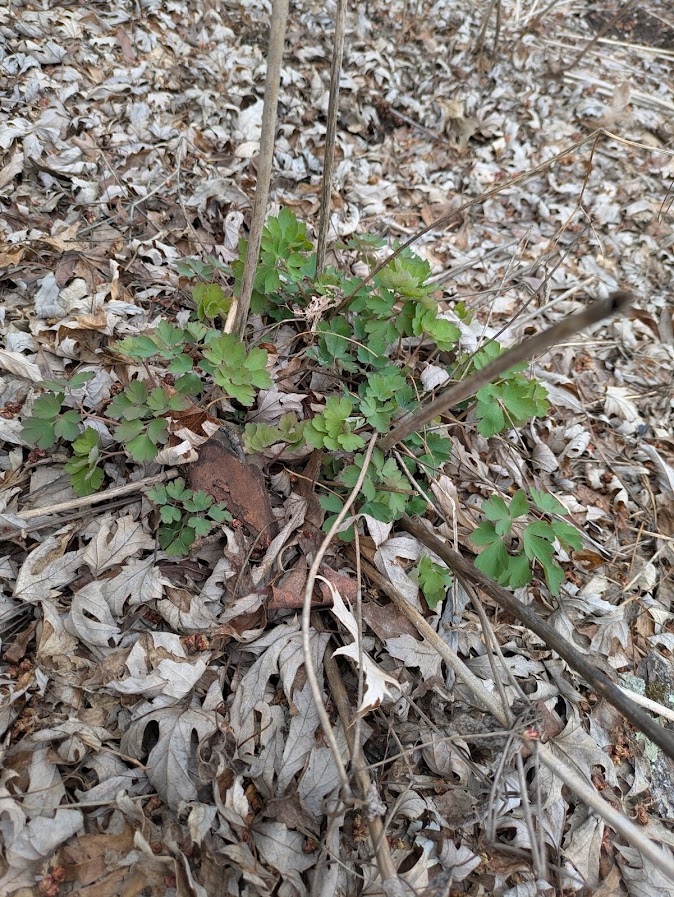
And a young columbine plant on the same day in very similar conditions:

Some other plants I’ve been excited to see poke through and continue to grow in my woodland/part shade garden include heartleaf golden alexander (zizia aptera):
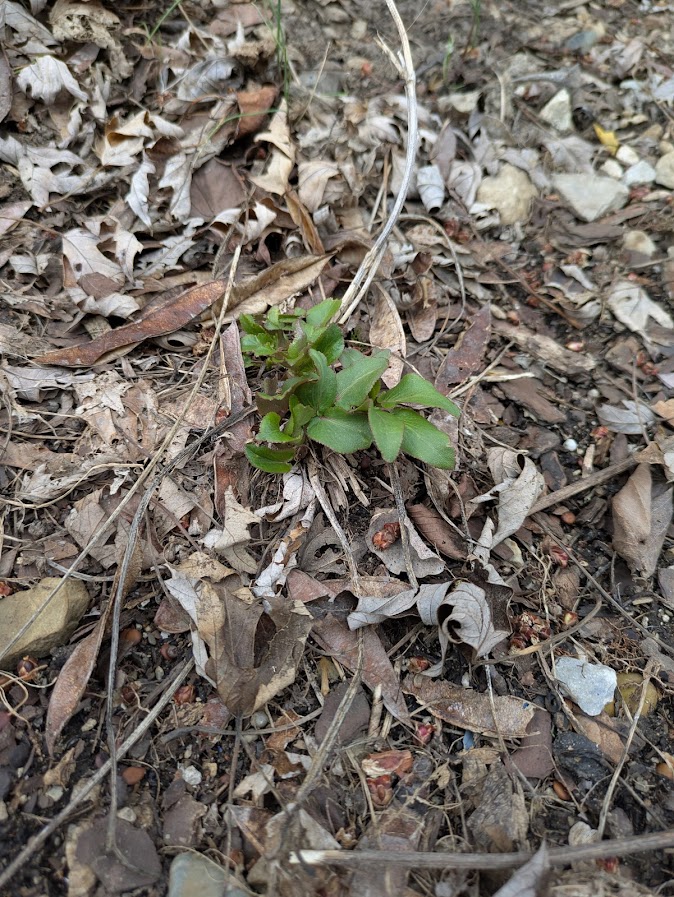
and jacob’s ladder (polemonium reptans), both of which tend to emerge in early March and put on a lot of early-season growth even during very cold temperatures and freeze cycles.
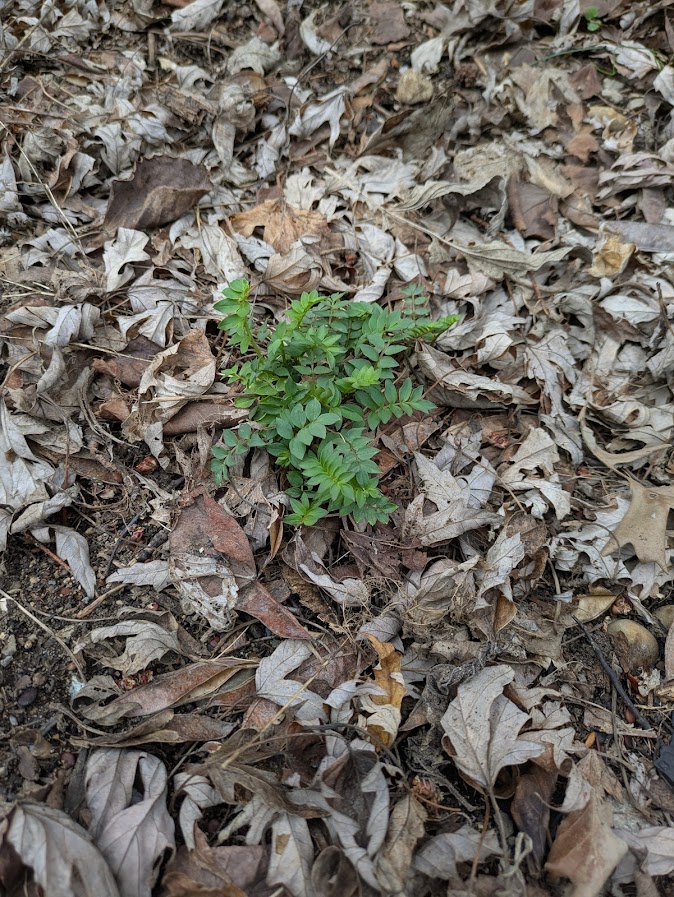
What Native Plants Stay Evergreen Through Winter?
This spring I’ve also been pleasantly surprised but also potentially concerned to see several of my native plants still holding on to their leaves from last year. I wasn’t sure if this was normal behavior or if the plants were just confused after some warmer than expected days through fall and winter, but it was unmistakable that quite a few plants had kept their foliage even while being covered in several inches of snow for a couple weeks this winter.
As a general rule of thumb, native plants in temperate regions lose their leaves in winter, but there are some that retain at least some foliage throughout the winter.
First, you could count trees and shrubs like eastern red cedar, eastern white pine, and American holly. But if you’re thinking more of perennial plants, however, it’s more common to find natives that you might call semi-evergreen.
Some, like Christmas fern and heuchera (alumroot, coral bells), are considered evergreen in most climates. But a wide range of other types of native plants retain foliage in some climates, especially when it’s been a mild winter. They may not be technically evergreen, but tend to retain a clump of basal leaves through the winter.
The factors affecting this include the plants’ microclimate such as levels of sunlight and moisture and how sheltered or exposed it is to cold winter winds.
So in my case, I saw quite a few do this, from rudbeckia (perennial black eyed susan like the popular “goldstrum” variety), echinacea (coneflowers), stiff goldenrod, and hairy penstemon (hirsutus).
Semi-Evergreen Natives in my garden:
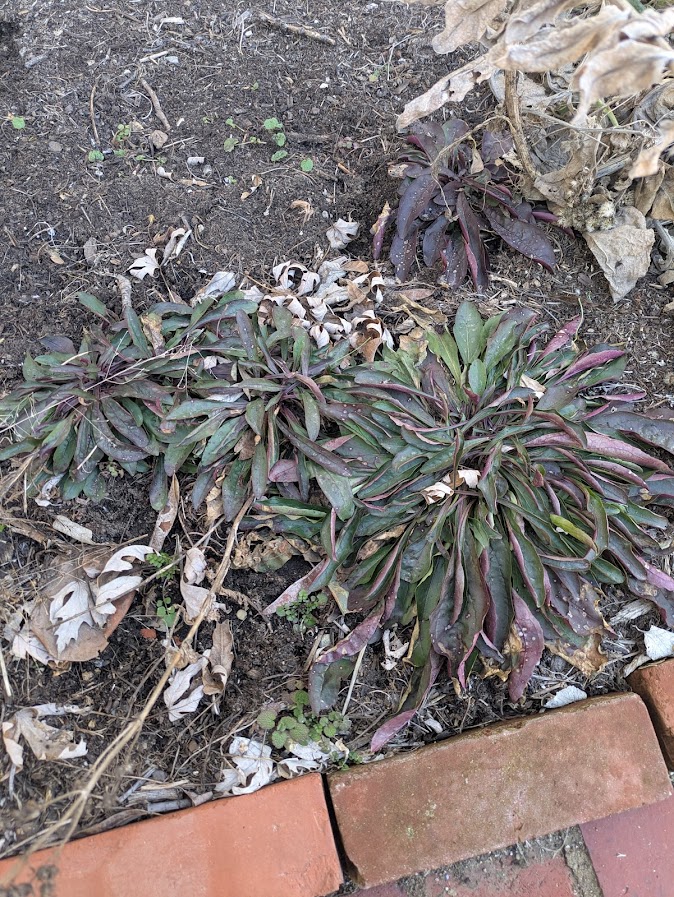
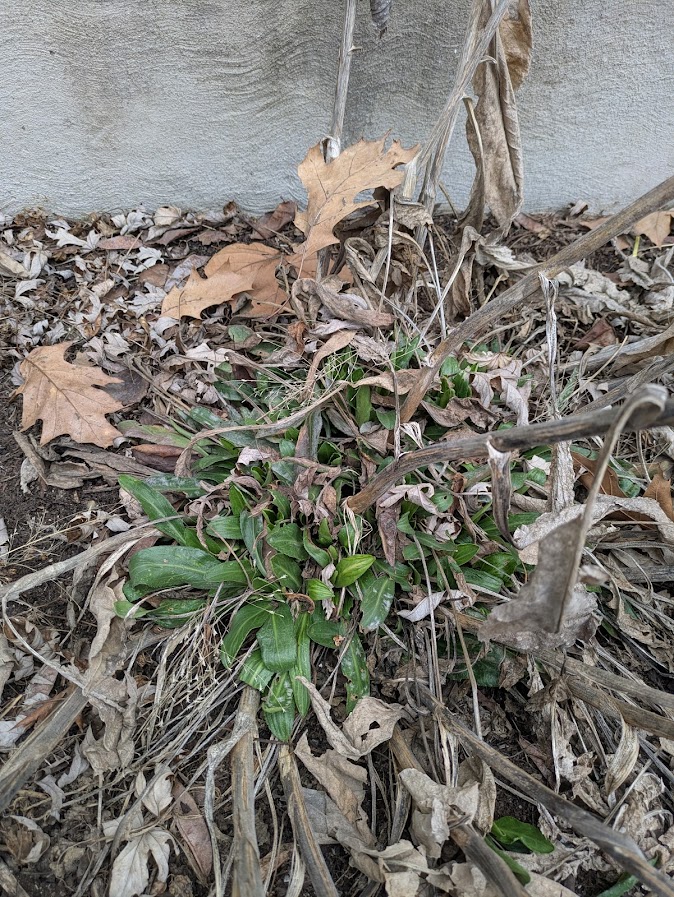
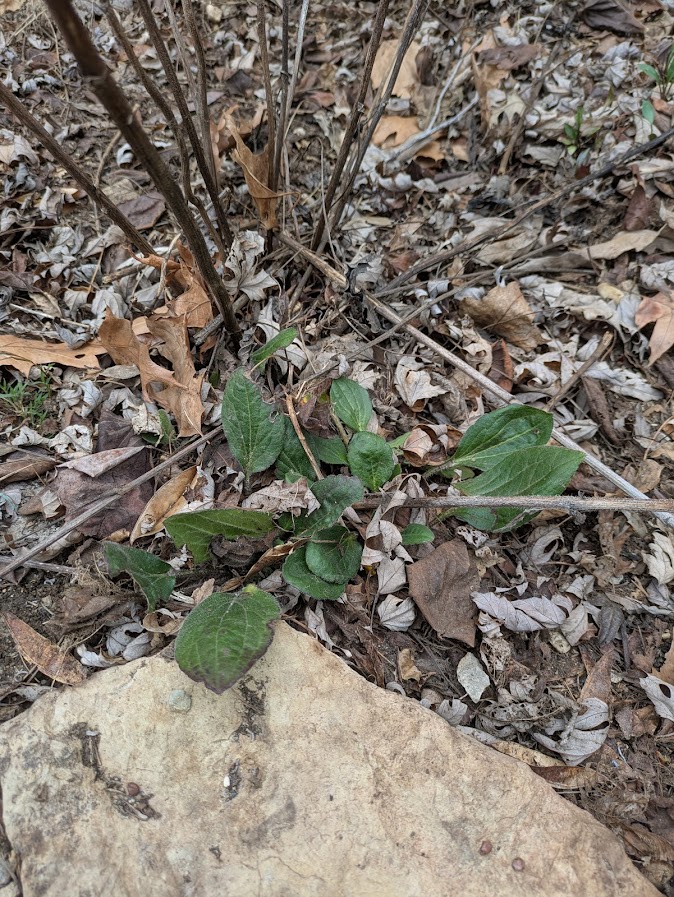
Should You Cut Back Last Year’s Semi-Evergreen Growth for Native Perennials?
As I looked out at these plants holding onto their leaves, some looked a bit tattered and worse for wear (like the penstemon) while others seemed to be relatively normal looking.
Overall, I wondered if I should cut some of these older leaves in order to leave more room for the new growth to push through.
This to some degree boils down to your gardening philosophy, and since most native plant gardeners are doing it for ecosystem and wildlife benefits from large to small, leaving things as close to their natural processes as possible is usually the way to go.
And when we think about this scenario, plants that have evolved to retain some foliage through a milder winter certainly have also evolved the ability to push their new growth on top of or through the older leaves.
But if you are gardening in a more visible location in your yard or have more aesthetic preferences for whatever reason, it’s certainly fine to cut them back for a tidier look and wait for the new spring growth to emerge. Be mindful that the leaves may be being used as shelter for insects or other small creatures, so if possible you might be able to just carefully remove them and gently place them in a back corner or leaf pile or other designated spot in your yard where they can naturally decompose.
For me, I did remove a few leaves whenever it looked like an extremely thick mat, or when the leaves looked extremely discolored and brown.
I’ll be back with more updates soon, including the elusive hunt for the first native blooms!
Leave a Reply